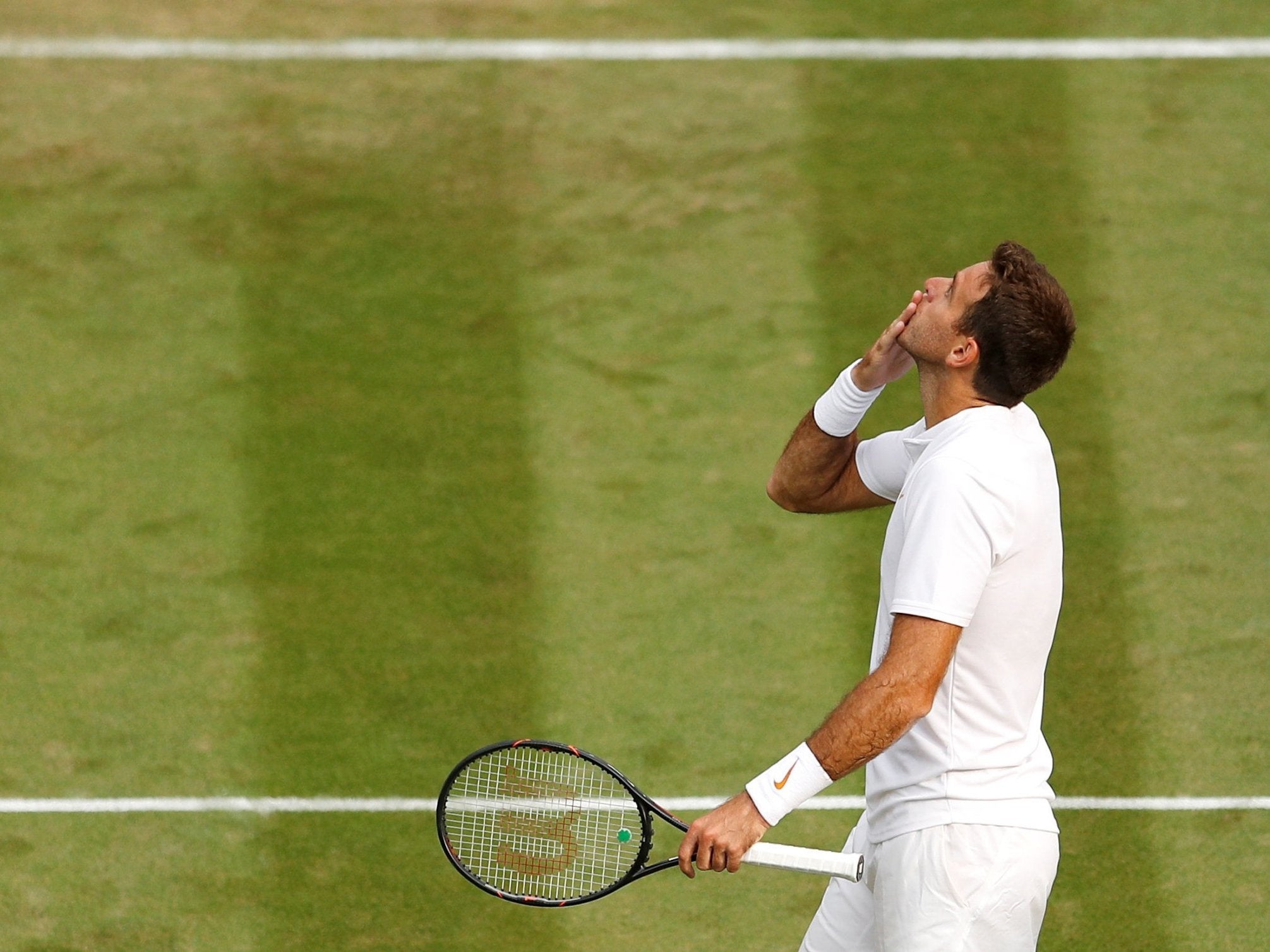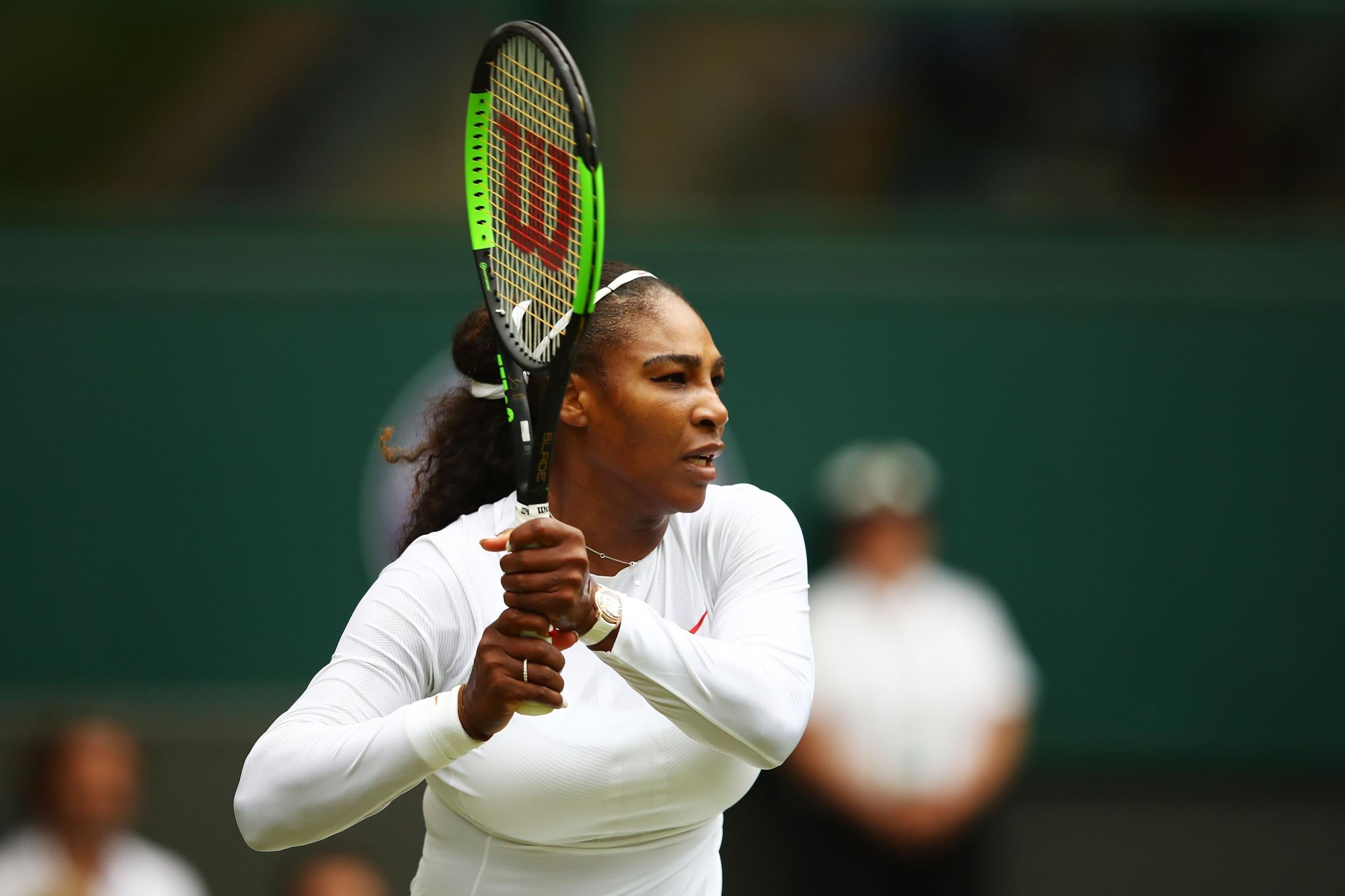Wimbledon 2018: Don’t rule out Juan Martin del Potro - he’s a threat to anyone, including Rafael Nadal
Writing in his daily Wimbledon column, legendary tennis coach Nick Bollettieri talks dangers in the men's draw and looks at Serena Williams' future

Your support helps us to tell the story
From reproductive rights to climate change to Big Tech, The Independent is on the ground when the story is developing. Whether it's investigating the financials of Elon Musk's pro-Trump PAC or producing our latest documentary, 'The A Word', which shines a light on the American women fighting for reproductive rights, we know how important it is to parse out the facts from the messaging.
At such a critical moment in US history, we need reporters on the ground. Your donation allows us to keep sending journalists to speak to both sides of the story.
The Independent is trusted by Americans across the entire political spectrum. And unlike many other quality news outlets, we choose not to lock Americans out of our reporting and analysis with paywalls. We believe quality journalism should be available to everyone, paid for by those who can afford it.
Your support makes all the difference.Everybody loves Juan Martin del Potro. The guy’s had so much bad luck that you’d never ask him to pick your lottery numbers, but he’s won fans the world over with the way he’s kept fighting back from injuries.
Ironically enough the wrist problems he’s suffered over the years have helped to make him a more complete player. For a long time he couldn’t hit his double-handed backhands, so he had to develop his sliced backhand, which is now a very useful weapon for him.
Not so long ago you’d see the big man hitting only slices on his backhand side, but these days he’s hitting huge double-handers as well. He hit some monstrous two-handed backhands against Feliciano Lopez to reach the third round. Lopez is normally a big threat on grass but he won only seven games under that barrage.

When you have a serve and ground strokes as big as Del Potro’s you’re a threat to anyone on any surface. When you add in his ability to hit slices he’s a huge danger on grass.
Looking at the draw, you’d expect Del Potro to make the quarter-finals, where he could meet Rafa Nadal. Holy cow, what a match that would be!
Friday’s match of the day: We’re learning more about Serena Williams’ chances with every match that she plays, but I still think it’s too early to judge whether she’s capable of going deep into this tournament.
We may well know more after her match against Kristina Mladenovic. Serena’s first two matches have been against opponents ranked outside the world’s top 100, but Mladenovic is a player who can compete with the best, even if she’s been struggling at times this year and is currently down at No 62. You never quite know what you’re going to get with her and it will be important for Serena to keep her focus.

From the start of this tournament I’ve thought that Serena’s movement will dictate how she does. She needs to get into position to hit those big shots of hers. However, I liked the way she came forward more in her second match. She’ll need to do more of the same against Mladenovic.
What the best players have taught me: Every day I’m recalling some of the things I’ve learned from great players I’ve worked with at the IMG Academy I founded in Florida.
It was in December 1985 that I first set eyes on Monica Seles. No, let me change that. It was in December 1985 that I first heard Monica Seles. I was at the Orange Bowl. I had been advised to go and watch Monica after she beat Kim Kessaris, an extremely talented young girl from the academy. As I approached the court you couldn’t see the players because of the backdrops on the fences, but I heard a sound that still rings in my ears: “Heee-heee-heee!”
It sounded as if a bird had flown into a window fan, but when I saw the players it was Monica, a very thin little girl standing smack on the baseline and hitting every ball with both her hands on the racket. I was so excited by what I saw that I awarded the whole Seles family scholarships – Monica, her brother Zoltan and both her parents.
At the academy Monica made a huge impact. I got her hitting with some of the best young men, including Andre Agassi. I don’t think she made a very good impression on Jim Courier, who was unhappy that she kept hitting winners past him.
So what did I learn from Monica? Well one of the biggest things was that practice can make perfect. She worked so hard to improve – and it paid off. She could also have saved court builders a fortune because as far as she was concerned there was no need to have any room behind the baseline.
And what I can teach you: I know that many players struggle against opponents who hit the ball with high and heavy top-spin. I think there are three ways to counter this.
Firstly, you can simply move back far enough for the ball to be in your strike zone after it’s landed. This means you won’t be struggling to return a ball that’s bouncing high towards your shoulders.
The one major problem with this strategy is that your opponent, seeing how far back you’re standing, might decide to follow in their shot and volley your return. If this happens, a second option is to move forward and take the ball early. This means you can hit the ball when it’s in your strike zone and before it gets up too high.
Read all about it: The Professional Tennis Registry are publishing my personal account of what I’ve learned in a lifetime of coaching tennis. I’m very excited about the project. You can find out how to buy the book later this summer at www.ptrtennis.org.
Join our commenting forum
Join thought-provoking conversations, follow other Independent readers and see their replies
Comments